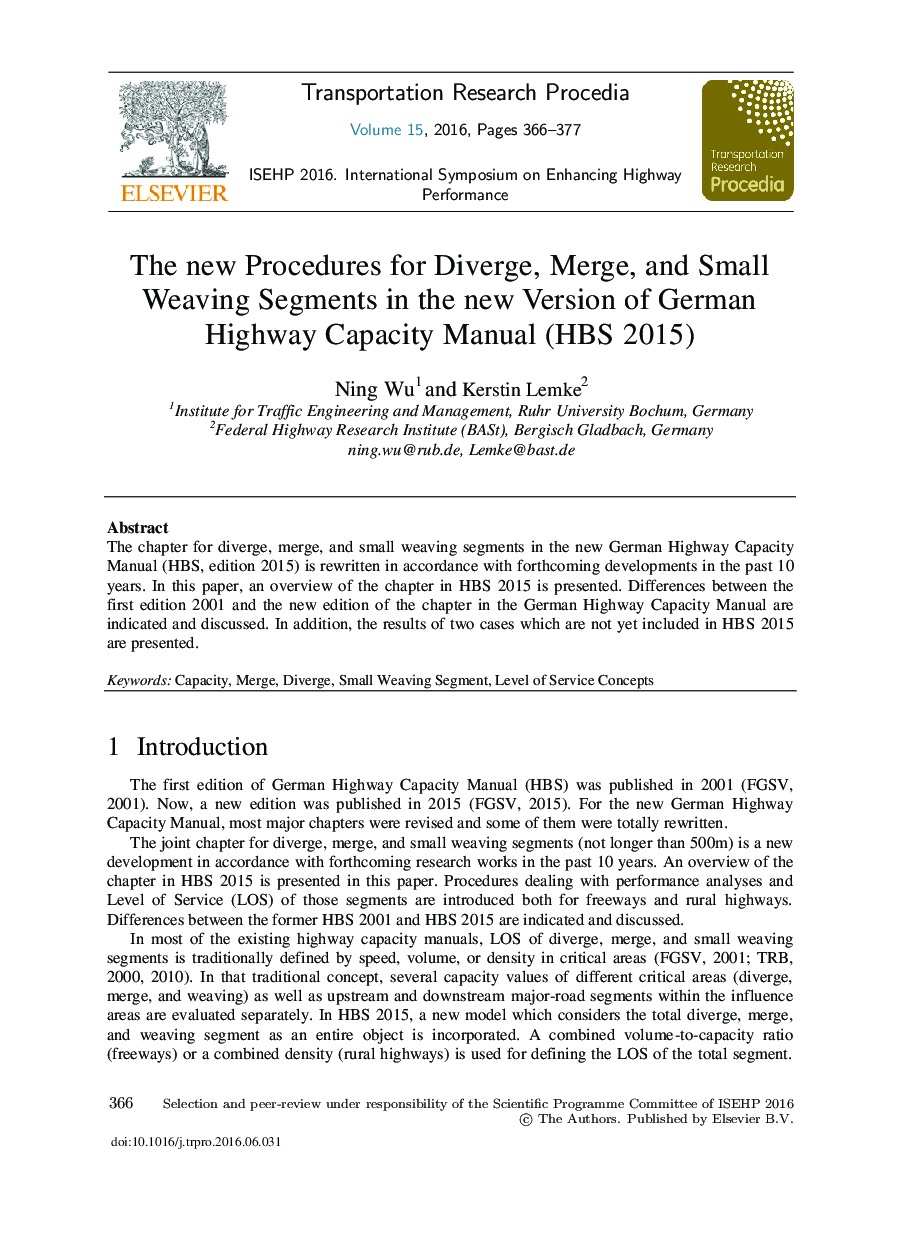| کد مقاله | کد نشریه | سال انتشار | مقاله انگلیسی | نسخه تمام متن |
|---|---|---|---|---|
| 1106122 | 1488280 | 2016 | 12 صفحه PDF | دانلود رایگان |
The first version of German Highway Capacity Manual was published in 2001. Now, a new version is published in 2015 (HBS 2015). For the new German Highway Capacity Manual, most major chapters are revised and some of them are totally rewritten. The chapter for merge, diverge, and small weaving segments is rewritten in accordance with forthcoming developments in the past 10 years. In this paper, an overview of the chapter in the new German Highway Capacity Manual is presented. Procedures dealing with performance analyses and level of service (LOS) of those segments are introduced both for freeways and rural highways. Differences between the former version and the new version of the chapter in the German Highway Capacity Manual are indicated and discussed. In most of the existing highway capacity manuals, LOS of merge, diverge, and small weaving segments is traditionally defined by speed, volume, or density in critical areas. In that traditional concept several capacity values of different critical areas (merge, diverge, and weaving) as well as upstream and downstream basic segments within the influence areas are evaluated separately. In the new HBS 2015, a new model which considers the total merge, diverge, and weaving segment as an entire object is incorporated. A combined volume-to-capacity ratio (freeways) or a combined density (rural highways) is used for defining the LOS of the total segment. The parameters of the new procedure are functions of the number of lanes of the major road, the number of lanes in the on-ramp or off-ramp, and the predefined geometric design of those segments. The coefficients are calibrated with field data or defined by experts’ experiences within a matrix of coefficients. With those procedures, the traffic quality (LOS) can be obtained directly as a function of the volumes or densities on the major road and on the on-ramp or off-ramp respectively. The new procedure has the following advantages: a) a uniform function for all types of merge, diverge, and small weaving segments, b) traffic quality assessment for all critical areas under investigation in one step, and c) the procedure can easily be calibrated. For applications in practice, a set of graphs is provided.
Journal: Transportation Research Procedia - Volume 15, 2016, Pages 366–377
